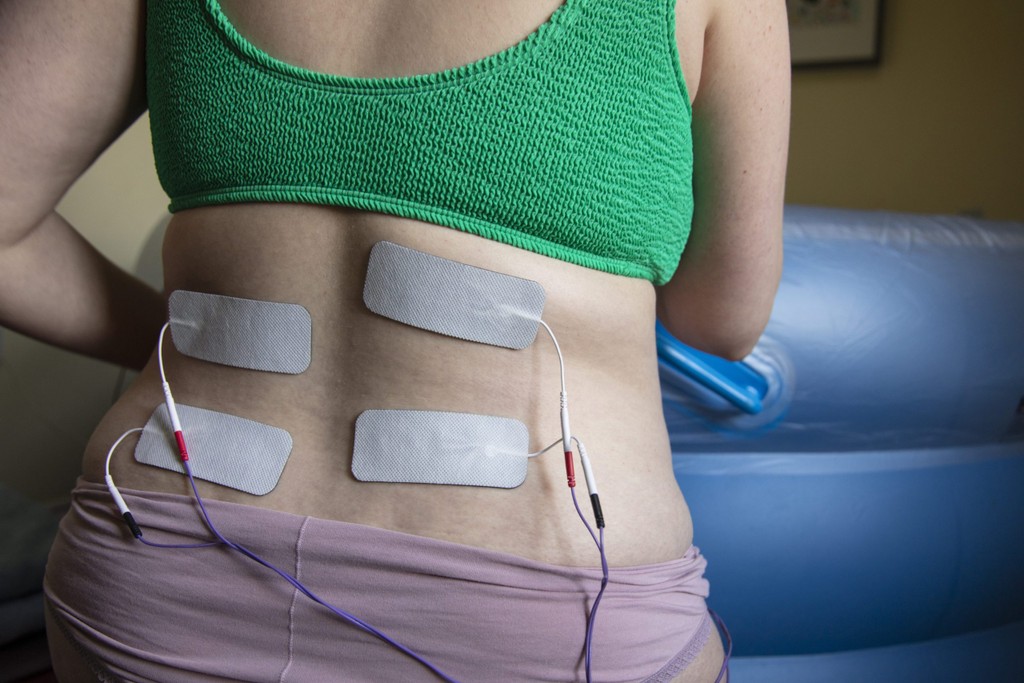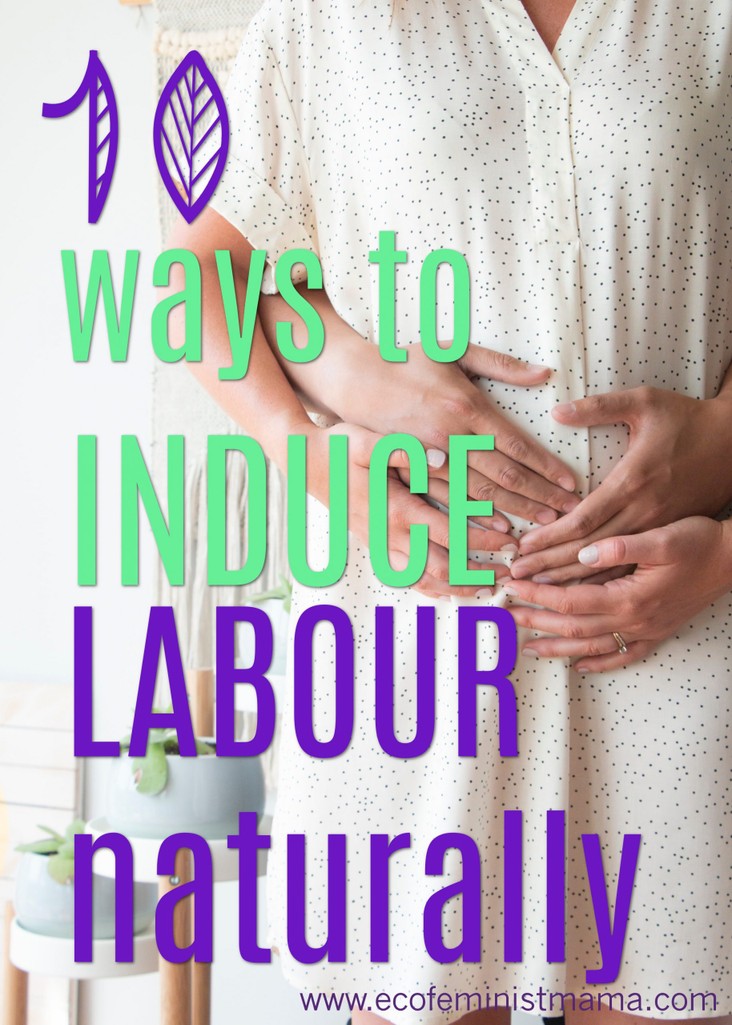I’m sitting down to write this on the “due date” (guess date) of my niece’s second baby. She’s thoroughly fed up with being pregnant and becoming increasingly uncomfortable, so this post is in honour of her. Anyone who’s been pregnant to term knows that, once you start getting near the end, you just want to know how to kick start labour and get the hell on with it.
It doesn’t help that the medical community, family and friends often seem to be alarmingly keen to encourage hospital induction the minute you’re supposedly “overdue”. 1 in 5 births in the UK begin with induction. (Read more about induction and the myth of being “overdue” in my other post)
But medical induction brings an increased chance of painful and traumatic vaginal intervention via forceps or ventouse. Labour is more painful and difficult to manage, and both the baby and mother’s body are placed under greater stress.
Remember, you never “have to” do anything your care provider tells you to. Midwives often have a habit of making you feel like you aren’t allowed to say no, but that’s not true. You should always contact AIMS if you feel you are being pressured by your healthcare team (in the UK).
A natural kick start to labour is far preferable to artificial induction. That said, most ways to bring on labour naturally will probably only work if your body and baby are approaching true readiness anyway. The methods below are opportunities to give yourself and your baby the most optimal conditions necessary for labour. They’re not a guaranteed way to force a labour that neither of you are ready for.
Always consult with your care provider before using any of the following, especially if you have any medical conditions or take any medication. These methods are for women who have reached 40 weeks of pregnancy with no major complications. Always use the BRAIN acronym when making decisions around your labour and birth decisions:
So with that quick ass-covering of mine out of the way, let’s find out how to induce labour naturally at 40 weeks and beyond.
BABY! This is a reusable block, so whatever edits you make in it will apply everywhere it is used. If you want to remove this disclaimer from a post then be careful to delete the parent block (type ‘Reusable Block’ – icon is lego brick), and not to delete the group, image and/or the paragraph blocks (cos then they’ll be deleted from every instance of the reusable block).
Disclaimer: This post contains ethical affiliate links that I genuinely recommend. I may receive a small percentage of any purchases you make as a result of clicking those links. This comes at no extra cost to you and helps me to run this site. Read my full disclosure
1) Clary sage
Clary sage is a super potent, earthy-smelling herb that has long been used traditionally to help kick start labour. It is not recommended for use before 40 weeks due to its enormous capacity to trigger uterine contractions. The deep relaxation response it inspires makes it perfect for sending in a big dose of oxytocin, a crucial hormone for labour onset.
Try putting it in a diffuser to scent the room, or use a carrier oil such as organic almond oil (never use essential oils neat) and rub it straight on your baby bump for an even more potent impact.
2) Sex
Now I understand if this is absolutely the last thing you feel like doing right now, but given that this is most likely where your journey to this point began, it’s appropriate that sex may well be the answer to getting your baby out. If you’re in a relationship with a man, sperm contains a high number of prostaglandins, a chemical that softens the cervical tissue – it’s such good stuff, in fact, that a synthetic version of it is used for medical induction. Meanwhile, the oxytocin kick from intimacy and an orgasm (which of course doesn’t need to be vaginal 😜) can also trigger labour. So, if you’ve got enough energy and inclination, get back in the sack – heaven knows it might be your last chance for a while!
3) Massage
This is another way to get that oxytocin flowing, and it’s an especially good one for anyone who wants to get the benefits of skin-to-skin touch but who can’t face going along with the previous tip.
Unless you’re lucky enough to be living with a trained masseuse, it’s a bit difficult to get a professional one here in the UK right now (currently still in the midst of easing COVID lockdown restrictions) but hopefully your partner (if you have one) will oblige. Do get them to take a look at this WikiHow guide to giving a pregnant massage and watch the below video, which has tips on safe positioning as well as massage techniques. Obviously your body is at a tender stage right now so it’s important that any non-professional offering you a massage is doing so with some basic awareness of what on Earth they’re doing!
4) Laughter
Yeah I know, this one sounds a little hokey doesn’t it, but again we’re looking at ways to increase your levels of oxytocin. Just to step back for a moment and go into the technical side of this magical hormone I’ve been talking about, oxytocin is a positive, love-fuelled hormone that plays a key role in childbirth. In fact it’s so fundamental that it not only signals the uterus to contract in the first place, it helps minimise pain during the final stages of labour to give you the final push, then hangs around after the birth to help with mother-infant bonding, breastfeeding, and protection from postpartum haemorrhage. Pretty awesome stuff.
Anything you can do to make yourself feel happy, loved, loving and generally warm and cosy will start giving signals to your body and baby that now is a great time to start the birthing process. You could try watching funny movies, or just your favourite feel-good tear-jerkers, perhaps with a skin-to-skin cuddle with your partner or other children, and see if you can get your general oxytocin levels up.
5) Red raspberry leaf tea
Not to be confused with raspberry flavoured teas, red raspberry leaf tea is another traditional herb that has long been thought to help tone the uterus and encourage the beginning of labour. If you’re into your evidence and research, there have been a small number of studies into the use of this herb for encouraging uterine contractions. While not enough research has been done to give a resoundingly positive result, there is a strong indication that red raspberry leaf has an impact on how the uterus contracts and relaxes, with no major negative outcomes associated with its use. There’s also promising evidence that it shortens labour, helps prevent membrane rupture, and reduces the likelihood of a c-section, forceps and ventouse.
You can drink RRLT just as any other herbal tea, steeping in boiling water in a ratio of 1tbsp of the dried herbs to one cup of boiling water, adding the sweetener of your choice as desired. Or you can get creative if you don’t like the taste. Add coconut milk for a yummy, creamy alternative, or make an iced version by adding 2tbsp raw honey (or maple syrup if vegan) and the juice of two lemons before cooling in the fridge and serving over ice.
6) Walking
If you’re as pregnant as I think you are right now, I TOTALLY understand if you want to tell me to take a running jump when I suggest you go on a long walk right now. The later stage of pregnancy where you’re desperately trying to get things to move along aren’t the most energetic, and I wouldn’t blame you if long rambles seem even less appealing than sex at the moment. But this one always comes up in lists of natural induction tips and does work for some. There’s not much evidence to support it, but I’ve heard many women swear by it.
This one is about using gravity and the motion of walking to help move your baby lower down in your body and (hopefully) give them the idea that they might like to keep on going!
If you’re in a location where you’re able to get out into a green open space on a pleasant day, the oxytocin boost from some time in nature will hopefully help things along too.
7) Bouncing on a yoga ball
This is a great option for anyone wanting to harness the power of gravity but feeling too uncomfortable to go for long walks. If you’ve got a pregnancy or yoga ball (which I hope you do because they’re great for use during labour!) then sitting on it and bouncing up and down may help to get the baby moving down to where they’re eventually going anyway.
Another great technique to encourage the baby’s head into the top of the cervix is to do little circles with your hips.
8) Eating dates
Bear with me on this one, because I know it sounds super old-wives-tale-y, but several major studies have found a number of significant and very important benefits to eating between 70-75g (or 4-6 depending on size) of dried dates everyday in the 4 weeks running up to your gestational due date.
Of particular interest here is that cervical dilation and ripening improves, meaning that the body becomes more ready for labour and the initial stages of birth will run more smoothly. Not only that, one study found that 96% of women eating dates went into labour spontaneously in comparison to 79% of women in the non-date-eating control group. Induction and interventions were reduced, and the first stage of labour was shorter. All the studies below found benefits to daily date consumption and concluded that the likelihood of interventions and augmentations were decreased, so there are a lot of benefits!
I realise that dates are not one of the most beloved foods to induce labour though, so if you’re not a fan head over to Pinterest where I’ve created a board of recipes that sneak dates in casually, so hopefully you’ll be able to tolerate them! Give me a follow while you’re at it as I post loads of natural, ethical pregnancy, birth and baby-raising tips.
9) Acupuncture
Of all the physical therapies most often associated with a natural kick start to labour (acupuncture, acupressure and shiatsu), acupuncture is the one that has the strongest evidence base behind it, so it’s the one I’m going to recommend the most.
If you’re not familiar with it, acupuncture is a form of traditional Chinese medicine that works on the theory that there are energy lines known as QI running through the body. Tiny needles are inserted into specific points along the QI lines in order to have the required effect. Obviously if you’re not a fan of needles then this isn’t the tip for you, but I had a lot of acupuncture for various ailments as a child and can testify that it’s not nearly as painful as it sounds. Many of the needles don’t even register going in and even the more painful ones are just like very mild pin pricks.
In terms of whether it can induce labour, the evidence errs more on the side of acupuncture having a positive effect on cervix dilation. It doesn’t necessarily spark things into action but there is very strong evidence that it has a positive impact on preparing the cervix for natural start to labour.
10) TENS machine
Last on the list is one I hadn’t actually come across before researching this post, and that’s using a TENS machine. Again I’m hoping you have one of these already in preparation for a natural birth but, in case you don’t know, a TENS (Transcutaneous Electric Nerve Stimulation) machine is a little gizmo that uses very small electric currents to reduce and relieve pain.
They’re amazing for getting you through the early stages of labour in particular, but I didn’t know they also have a reputation for being able to kick start labour naturally. This is thought to be as a result of its ability to induce the production of endorphins, another key hormone that plays a huge role in childbirth. Just please make sure you take a look at this guide on using a TENS machine during pregnancy, and ensure that you don’t have any of the contra-indications that mean you shouldn’t use one.
If you haven’t already invested in a TENS machine for labour, this one from John Lewis looks awesome – as well as the nerve stimulation features it has added extras like a built in contraction timer to help you keep track of things. I used a TENS during my natural childbirth and, although there came a point where I didn’t want it anymore, it definitely helped to get me through those early labour pains and I’d say it’s a must for anyone with childbirth on the horizon.
So I hope some of these prove useful to you but, even if your birth story doesn’t get to start for another couple of weeks yet, please trust your body and your baby to know when they are ready to begin. It’s so easy to wish away the last days and weeks of our pregnancy as we near the big day, but they really are a crucial period of time in which mother, baby, body and placenta are all making the final preparations needed to ensure a successful birth.
If there are no urgent medical concerns that clearly show an induction will do more good than harm, I truly believe in allowing the body and baby to finish gestation naturally. There’s a lot of pressure out there to get on with labour no matter the cost, but I believe that hibernating away, slowing down and trusting the mother with the task her body already knows how to fulfill is usually the best way to begin a baby’s entry into the world.
However your labour begins, I would love it if you’d do me the honour of coming back and telling me your birth story. Drop me a line letting me know your story and whether you’d like it to be considered for publication on my blog. Birth stories deserve to be told and I’d feel privileged to share yours if you’d like me to.
So those are my top ten tips for how to kick start labour. Wishing you a happy, healthy end to your pregnancy and a positive, joyful birthing experience.





